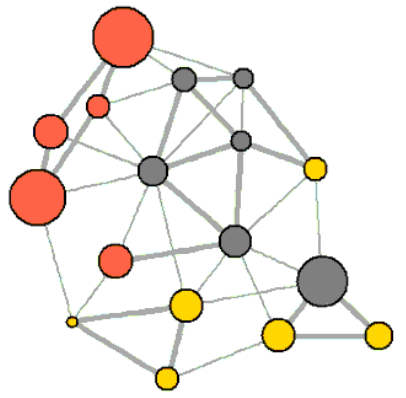Project: Path-Centric Analysis and Visualization of Dynamic Networks
Description

Network
analysis is often node-centric, e.g., ego-network analysis using a node-link
diagram. Other times the analysis is more edge-centric such as the high-level
communication overview provided by a hierarchical edge bundle view. A path-centric
analysis and visualization is still an unexplored area. Paths are often
important in understanding network topology; the diameter, shortest, and
longest paths and their distribution provide insight. Many of the social
network centrality metrics are based upon the paths in a network. In many
networks, paths provide essential views on how information spreads through the network,
e.g., diseases in a social network, money in a financial network, infections in
a computer network and information in a mobile phone network. In this project we
investigate how to extract and visualize all paths from a network enabling a
path-centric analysis.
Dynamic
networks are often studied by ignoring the time aspect and create one super
graph or aggregating the network into different time windows. This approach
hides a lot of the information present with respect to transitivity. In a
static (or aggregated subsample) network if a is connected to b and b is
connected to c then indirectly a is also connected to c, i.e., c is reachable
from a. However, if we take time into account this need not be the case, for
example, if edge (a,b) is active only after edge (b,c). This information is
lost partial by aggregation or completely by creating a static super-graph. By
extracting all paths from the network we can respect the time aspect of the
edges.
The
visualization of all paths is essentially a tree. This provides a way to
visualize and analyze the network on a deterministic manner, independent of
graph layout algorithm. In this project we explore and develop a novel
path-centric network visualization.
Requirements
- Good programming skills
- Understanding of dynamic networks
- Visualization background
Details
- Student
-
SWSam van de Weyer
- Supervisor
-
 Stef van den Elzen
Stef van den Elzen